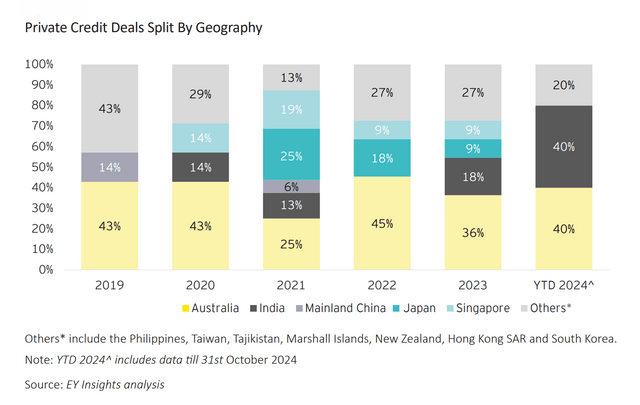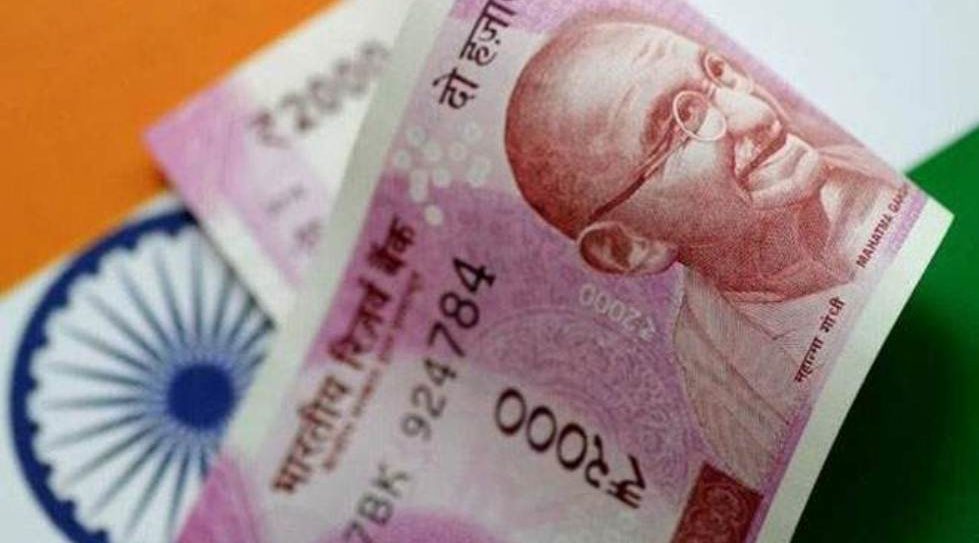India has rapidly emerged as a powerhouse in APAC’s private credit scene, accounting for an estimated 40% of the region’s private credit market last year, matching the activity level of Australia – one of the most mature markets in APAC.
That’s a dramatic leap from 18% in 2023, according to the Private Credit in Asia 2.0 report by the Alternative Investment Management Association, Broadridge, EY, and Simmons & Simmons.

Fresh numbers from EY underscore just how fast things are moving. In the first half of 2025 alone, private credit investments in India surged to $9 billion, increasing 53% year-on-year and nearly tripling the amount seen in H2 2024.
The surge is being fuelled by mid-sized corporates, real estate developers, and infrastructure players that continue to face limited access to traditional bank lending. Domestic private credit funds are firmly in control of the market, deploying about 70% of total capital.
While banks largely dominate Asian credit, India has the highest non-bank lending ratio at 41%, reflecting how quickly private lenders are stepping in to fill financing gaps.
Deal size and complexity are also growing. In the first half of 2025, deals exceeding $100 million accounted for 18% of the total count of transactions and represented 80% of total deal value, according to the report. Major deals include a $3.1 billion refinancing for Shapoorji Pallonji Group, a $750 million facility for Adani Group, and $733 million for GMR Infra Enterprises – signalling increasing sophistication and scale in the market.
India could make up as much as 30% of private credit fundraising across APAC this year, underscoring investors’ appetite for higher returns and companies’ growing reliance on alternative financing. Despite the strong growth, India’s private credit-to-GDP ratio still sits at less than one-fifth of that in the US, suggesting enormous headroom for expansion, the report pointed out.
By contrast, private credit activity in Mainland China and Hong Kong has remained subdued, with new-money financing volumes still below pre-COVID levels. It accounted for only 20% of APAC’s dealmaking last year, shrinking to less than half of the 43% seen in 2019. High US rates, geopolitical uncertainty, and local market factors such as tightening of Mainland China’s regulatory regime, increased competition from local bond markets, and compressed margins have all weighed on sentiment.
Meanwhile, momentum is still building in markets like Japan, South Korea, and Southeast Asia.
For investors, the APAC region’s fragmentation is a challenge, but also an opportunity for diversification across geographic market strategies. Its varied credit cycles offer tactical deployment, “whether through growth-stage lending in Southeast Asia’s expanding fintech and infrastructure sector or through restructuring and special situations in Mainland China’s recalibrating markets,” the report said.
This valuable counterbalance has made APAC private credit a strategic component of global alternative investment portfolios.
Private wealth demand
The report also showed that the private wealth channel will give a leg up to the growth of private credit AUM in APAC. Retail investors are expected to account for 28% of this AUM by 2027, equivalent to $25.4 billion, up from 23% in 2020.
Overall, the AUM is anticipated to surge from $59 billion in 2024 to $92 billion by 2027. This growth rate positions private credit to outpace other private market strategies over the next three years.
While APAC private credit is becoming mainstream, it still represents a small fraction of the region’s public credit market, underscoring how early the asset class remains—and how much room it still has to grow.
Going forward, the industry will continue to be sustained by the growing middle class in APAC, particularly concentrated in emerging markets such as India, Indonesia, and Vietnam; intra-regional trade, which is projected to more than double to $13.5 trillion by 2030; and the region’s infrastructure needs at $26 trillion by the same year.



